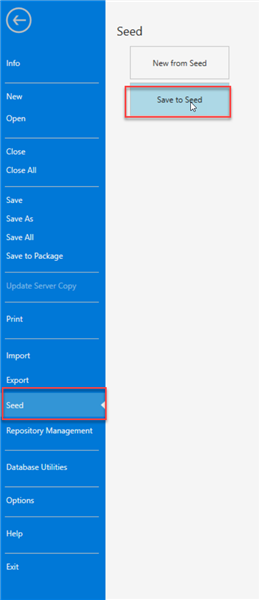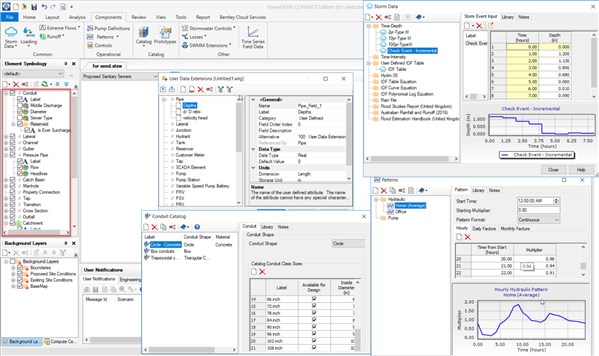| Product(s): |
WaterGEMS, SewerGEMS, WaterCAD, SewerCAD, StormCAD, Hammer, CivilStorm |
| Version(s): |
08.11.XX.XX, 10.XX.XX.XX |
| Area: |
Layout and Data Input |
Problem
How do I setup a model template / seed file, which can be utilized for my future projects?
What is a Seed file? (in the context of the OpenFlows products)
Background
Often, we wish that we could save a model template which we could use every time we start working on a new project, which could save man hours to setup all the standards again before starting the project. For example design standards, color coding, legends, annotations, engineering libraries newly created items, composite outlet structures, user data extensions, default units of model, standard flex tables, custom report formats etc. Essentially any standard information that you want to use as part of any model; so if you have these standards predefined then you can just start working on the model.
Solution
The above-mentioned standards can be saved in Seed file format, so every time you are creating a new model you can just import the seed file (File > Seed > New from seed) and these standards will appear there by default, so you don’t need to set them up separately for each model.
Seed file
A Seed file is simply a copy of a model that has been pre-configured with the standard information and settings you desire. If you want to create a standard seed file from a model you should delete all the elements in the model and then save it as seed file (Else model elements will get saved in seed file). So this seed file then can be utilized for creating new models.
What information can a seed file (*.wgs) store? To name a few;
For Storm-Sewer products
- Color coding & Annotations, Legends
- Storm data
- Default calculation options
- Patterns
- Prototypes
- Catalogs e.g. conduits, inlets
- Background layers
- Engineering libraries
- Engineering standards
- User data extensions
- Defaults units
- Default design constraints
- Customized flex tables
- Custom report formats
- Composite outlet structure combinations
- Extreme flows / peak flow factors
- Minor loss coefficients
For water products
- Color coding & Annotations, Legends
- Default calculation options
- Patterns
- Prototypes
- Background layers
- Engineering libraries
- Alerts
- User data extensions
- Defaults units
- Customized flex tables
- Custom report formats
- Darwin Designer defaults
- Darwin Calibrator defaults
- Darwin Scheduler defaults
- Flushing standards
- Default fire alternative standards
- Minor loss coefficients
Once you have setup the above-mentioned standards in a model (which you feel can be utilized for the next projects by you and your colleagues), then create a seed file of that model, by going to File > Seed > Save to Seed (save your model before creating seed).

As an example of how this can be useful, suppose you have added HDPE in the Material engineering library for modeling purpose as HDPE does not exist in default engineering library. Now you would want to save this engineering library data for the next project/model, so you don’t have to create this entry every time, so you will create a seed file out of this model.
For storm-sewer products if you want to preserve storm data i.e. IDF curve , time-depth curves, then you can include that in your existing seed file as well. To do this, create a model using seed file, create storm data in this model file now and then save it to seed and rewrite the existing seed file. This way you can keep on adding data to seed file as required.

See Also
VIDEO - Save Time using Engineering Libraries, Shared Flextables and Seed Files
How to create and share FlexTables between different computers
Transferring custom Engineering Library files from one computer to another